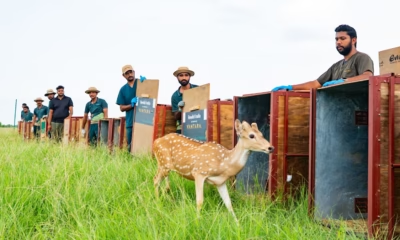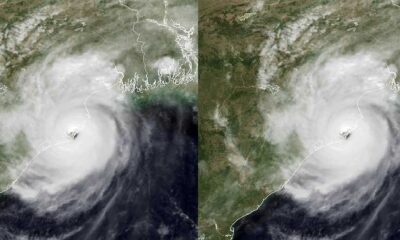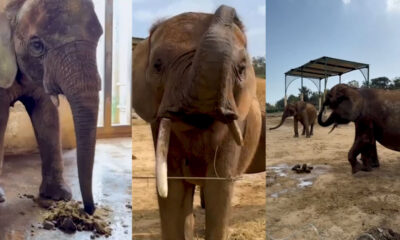Earth
India’s richest family launches futuristic global conservation project
Reliance Foundation’s Star of the Forest’ project aims to be one of the leading conservative initiatives globally.

Reliance Foundation, the philanthropic arm of Reliance Industries, owned by India’s richest man, Mukesh Ambani, has unveiled an intriguing conservation initiative named Star of the Forest (Vantara in local Hindi language). According to Reliance, this initiative is committed to addressing the pressing needs of injured, abused, and vulnerable animals, not only within the borders of India but also extending its reach globally. Nestled across a vast expanse of 3000 acres inside the lush Green Belt of Reliance’s Jamnagar Refinery Complex in Gujarat, Vantara sets its sights on emerging as a beacon of hope in the worldwide conservation landscape.
“Through strategic partnerships with animal welfare professionals and experts, Vantara has successfully transformed this expansive area into a thriving and vibrant oasis that emulates the natural habitats essential for the well-being and flourishing of the rescued species,” according to a statement issued by the Reliance Foundation.
Vantara is a combination of the age-old ethical value of compassion with the excellence of modern scientific and technological professionalism. I see Jeev Seva (animal care) as a seva towards the almighty as well as humanity”
Anant AMBANI
The game-changing Vantara initiative, a pioneering project unprecedented in the Indian landscape, has been conceived and brought to fruition under the leadership of Anant Ambani. He is a director on the boards of RIL and the Reliance Foundation. Ambani has demonstrated unwavering dedication to driving sustainable advancements within the conglomerate. Furthermore, he serves as the driving force behind Reliance’s bold foray into the renewable energy sector in Jamnagar. With a steadfast commitment to environmental stewardship, Ambani is steering Reliance towards the ambitious goal of transforming into a Net Carbon Zero company by the year 2035, championing a paradigm shift towards a greener and more sustainable future.

“Vantara is a combination of the age-old ethical value of compassion with the excellence of modern scientific and technological professionalism. I see Jeev Seva (animal care) as a seva towards the almighty as well as humanity,” says Anant.
Vantara is focused on creating quality animal conservation and care practices, including state-of-the-art healthcare, hospitals, research, and academic centres. Within its programmes, Vantara also focuses on integrating advanced research and collaboration with reputed international universities and organisations, such as the International Union for Conservation of Nature (IUCN) and the World Wildlife Fund for Nature (WWF).
Vantara has a centre for elephants and facilities for several other large and small species, including lions and tigers, crocodiles, and leopards
“What started as a passion for me at a very young age has become a mission now with Vantara and our brilliant and committed team. We are focused on protecting critically endangered species native to India. We also want to restore vital habitats, address urgent threats to species, and establish Vantara as a leading-edge conservation programme. We are delighted that our efforts have been recognised in India and internationally. Some of India’s and the world’s top zoological and medical experts have joined our mission, and we have been blessed to receive active collaborations and guidance from government bodies, research institutions, and educational institutions,” says Anant Ambani.
Vantara has a centre for elephants and facilities for several other large and small species, including lions and tigers, crocodiles, leopards, etc.
Earth
India and China to Peak Coal Emissions by 2030 — and India’s Data Proves It’s Economically Inevitable
New analysis finds China, India, and Indonesia—the world’s top coal users—can peak power-sector emissions by 2030, marking a global climate turning point.
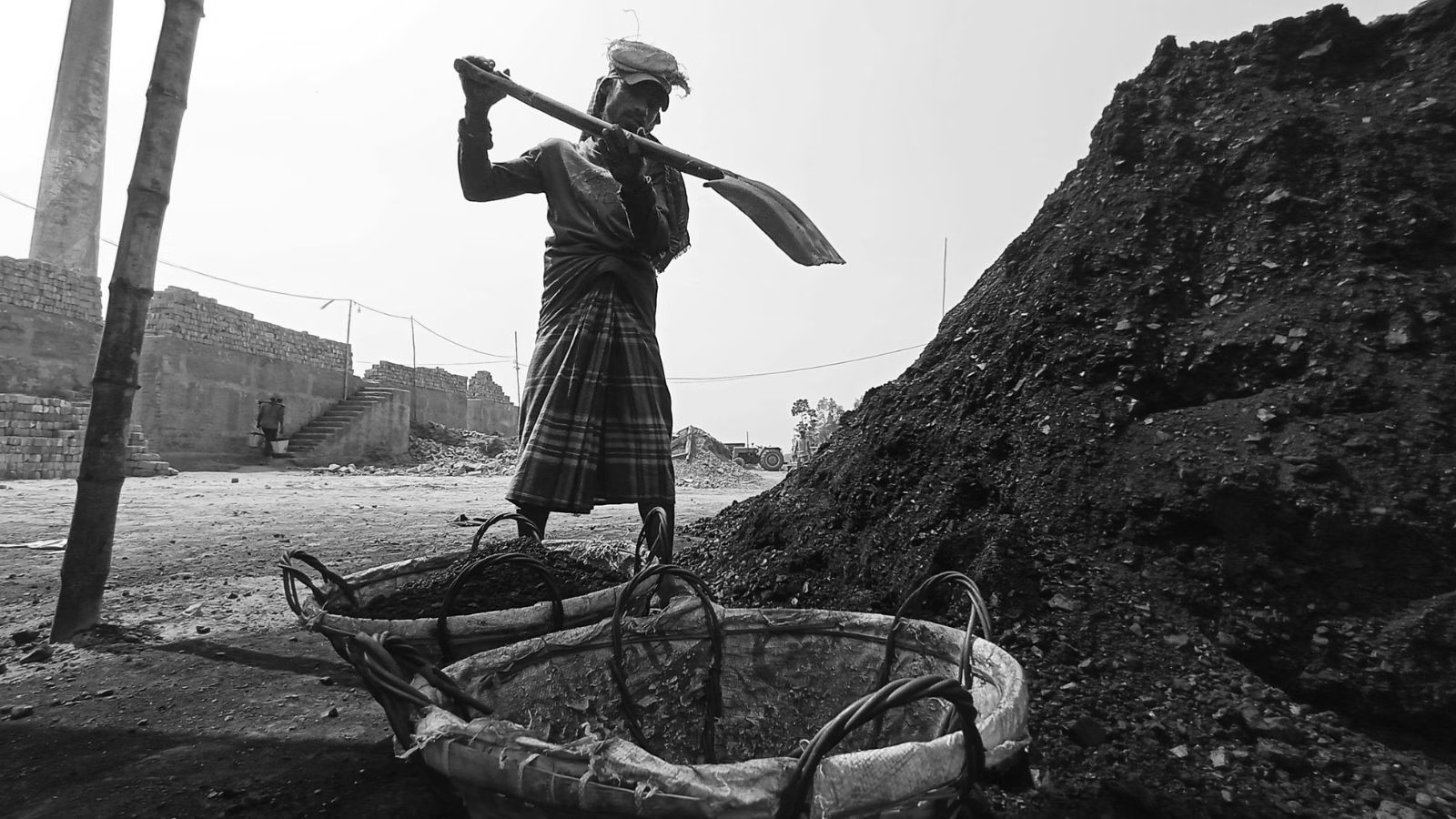
In what could mark a historic global energy shift, new analysis from the Centre for Research on Energy and Clean Air (CREA) reveals that the world’s three largest coal growth markets, China, India, and Indonesia, are on track to peak their power sector emissions by 2030. Together, these nations accounted for a staggering 73% of global coal consumption in 2024, making this potential turnaround a defining moment in the fight against climate change
China: Clean Energy Outpaces Demand
China has already reached a milestone that once seemed improbable: clean energy growth has outpaced the rise in electricity demand, leading to a fall in coal power emissions since early 2024
In 2024 alone, the country added 277 GW of solar capacity and 80 GW of wind, with an additional 212 GW of solar in just the first half of 2025. “Since I announced China’s goals for carbon peaking and carbon neutrality five years ago, China has built the world’s largest and fastest-growing renewable energy system,” President Xi Jinping declared earlier this year.
If current trends continue, China’s coal use may never return to previous highs. But sustaining this progress depends on meeting its 2035 clean energy targets and avoiding a slowdown in installations.
“China has already added enough new clean electricity generation to cover all new demand growth, and power sector coal use and emissions have been falling since 2024 as a result,” said Lauri Myllyvirta, CREA’s Lead Analyst, in the report.
India: Rapid Clean Energy Expansion Takes Off
India’s clean electricity boom, once stalled, has roared to life. In 2024, the country added a record 29 GW of non-fossil capacity, and by mid-2025, that pace had surged by 69% year-on-year.
With Prime Minister Narendra Modi’s 500 GW clean power target by 2030, India is already more than halfway there. The nation’s growing domestic solar manufacturing base—118 GW of module capacity and 27 GW of solar cells—is transforming it into a global solar hub.
“Meeting India’s 500 GW non-fossil power capacity target could peak coal power before 2030,” said Manoj Kumar, CREA Analyst. “Strengthening grid flexibility, storage, and transmission will be key to sustaining this momentum.”
India’s Coal Economics Have Flipped
A new report from Ember (October 2025) adds powerful economic validation to CREA’s projection.
Titled “Adding coal beyond the National Electricity Plan 2032 targets is uneconomical for India,” Ember’s findings confirm that building more coal plants is no longer cost-effective or necessary.
Ember’s least-cost operations model shows that if India meets its National Electricity Plan (NEP) 2032 targets for renewables and storage:
- 10% of new coal units built after FY2024–25 will be completely unutilised by 2031–32
- 25% of the coal fleet will be heavily underutilised
- Coal-based electricity will become 25% more expensive by 2031–32 as utilisation drops
“Building coal beyond the current pipeline is neither necessary nor economical for the country,” said Neshwin Rodrigues, Senior Energy Analyst at Ember.
Ember’s study aligns with CREA’s broader conclusion — India’s clean energy growth is not only sufficient to meet new demand but also the cheapest and most reliable path forward.
Indonesia: Big Solar Vision vs. Fossil Reality
Indonesia’s new president Prabowo Subianto has laid out a bold plan for 100 GW of solar capacity and a 100% renewable power system by 2035. If fully realized, this initiative alone could cause coal power to peak by 2030.
However, Indonesia’s official power plan—the RUPTL 2025–34—still leans heavily on new coal and gas plants. CREA’s analysis warns that without strong oversight and power market reforms, Indonesia’s solar revolution could stall.
“The real opportunity lies in translating this vision into a concrete delivery roadmap that positions clean energy to dominate new capacity additions,” said Katherine Hasan, CREA Analyst.
The Economics of Change
Across all three nations, clean energy’s economic edge is becoming undeniable.
The cost of solar panels has dropped 60% since 2022, while battery storage prices fell 50% between 2022 and 2024. In China, clean energy industries now make up over 10% of GDP, fuelling jobs and innovation. India’s solar bids are now cheaper than coal tariffs, and Indonesia’s strong sunlight potential could soon make solar the most cost-effective option for households.
CREA’s report also highlights that these clean energy drives align with national priorities: energy independence, industrial growth, and improved air quality.
A Common Threat: Coal’s Last Stand
Despite rapid progress, the report warns of a looming obstacle—new coal projects. China currently has 230 GW of coal-fired power under construction, and India plans 100 GW more by 2035. “Unchecked coal power expansion risks creating powerful vested interests that could delay the energy transition,” Myllyvirta cautioned. A rapid phase-down post-2030, he added, could cut emissions equivalent to India’s entire 2019 CO2 output.
A Turning Point for BRICS and the Planet
If successful, China, India, and Indonesia would join Brazil, South Africa, the UAE, and Ethiopia—other BRICS members that have already peaked their power emissions—transforming the bloc into an unexpected climate leader.
But the next few years are pivotal. Whether these nations sustain their clean energy momentum or fall back into fossil dependence could determine the world’s ability to meet the goals of the Paris Agreement.
As CREA concludes in the report, the road to peaking emissions is now open—what remains is the political will to walk it.
Earth
Guterres to WMO: ‘No Country Is Safe Without Early Warnings’
At WMO’s 75th anniversary, UN Chief António Guterres warned that no nation is safe from extreme weather — urging governments to fast-track early warning systems by 2027.
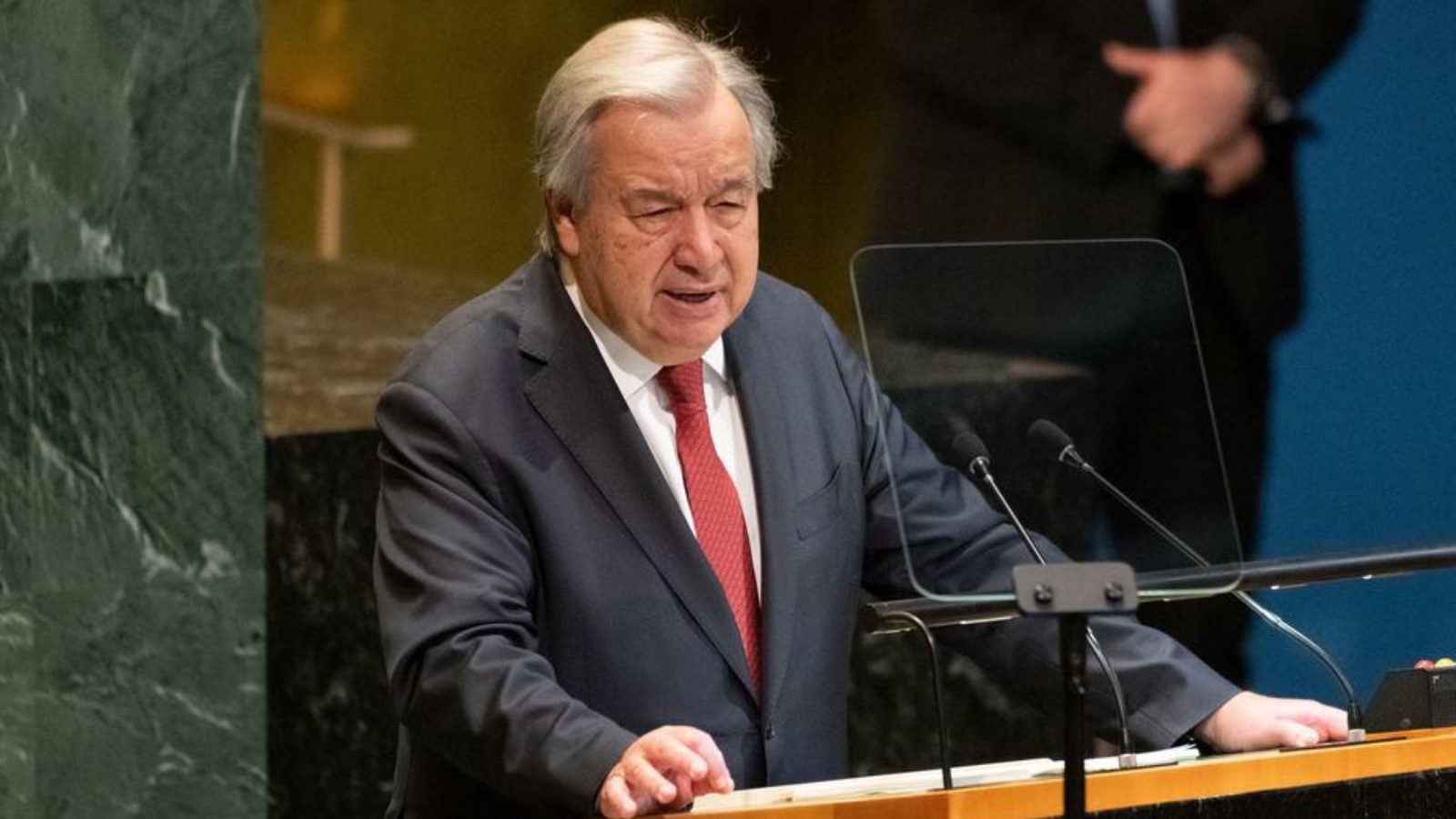
Declaring that “no country is safe from the devastating impacts of extreme weather,” UN Secretary-General António Guterres called for a global surge in early warning systems to protect lives, economies, and ecosystems from climate-fuelled disasters.
Speaking at the 75th anniversary of the World Meteorological Organization (WMO), Guterres hailed the agency as “a barometer of truth” and “a shining example of science supporting humanity.” It was his first address to the WMO, reflecting the agency’s central role in turning climate science into life-saving action.
“Without your rigorous modelling and forecasting, we would not know what lies ahead — or how to prepare for it,” he told delegates gathered at WMO headquarters in Geneva.
The occasion doubled as the midway checkpoint for the Early Warnings for All (EW4All) initiative, launched by Guterres in 2022 to ensure every person on Earth is protected by life-saving warning systems by 2027.
WMO Secretary-General Celeste Saulo issued a “Call to Action,” urging all countries to close early warning gaps through expanded observation networks, strengthened hydrological services, and community-level outreach. “Every dollar invested in early warning saves up to fifteen in disaster losses,” she said.
Saulo cautioned that despite major progress—108 countries now operate multi-hazard warning systems—the world’s poorest remain the least protected. Disaster mortality rates are six times higher in countries with limited early warning coverage.
A 75-Year Legacy of Science for Action
Marking 75 years since it became a UN specialized agency, WMO used its Extraordinary Congress to reaffirm global cooperation in weather, water, and climate monitoring.
President Abdulla al Mandous praised Guterres for embedding early warning systems into the international climate agenda: “Early warnings are now recognized at the highest levels as cost-effective, life-saving, and cross-cutting solutions that reduce risk and advance development,” he said.
Guterres urged three urgent priorities to achieve universal coverage: integrating early warnings across governance structures, boosting finance and debt relief for vulnerable nations, and aligning national climate plans to limit temperature rise to 1.5°C.
“Every life lost to disaster is one too many,” he said. “With science, solidarity, and political resolve, we can ensure a safer planet for all.”
COP30
Farmers Warn: The World Needs $443 Billion a Year to Protect Those Feeding Half of Humanity
A new global report reveals smallholder farmers need $443 billion annually to adapt to climate change—less than today’s harmful farm subsidies. As COP30 nears, farmer groups demand direct funding for resilience.
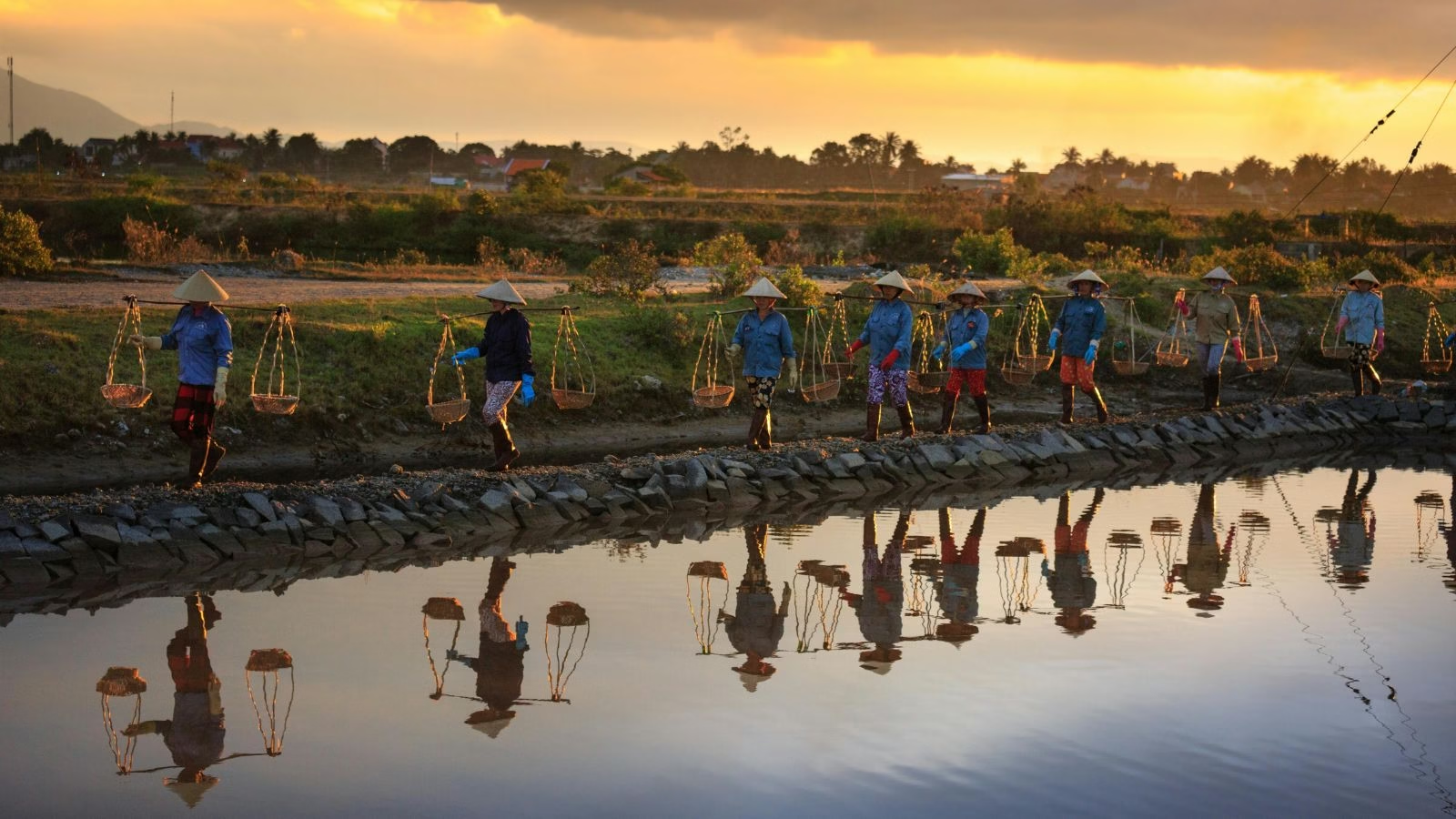
A new global analysis released ahead of COP30 warns that the world must mobilize at least US$443 billion each year to help smallholder farmers adapt to worsening climate impacts—nearly the same amount currently spent on subsidies that harm both people and the planet.
The report, released by Climate Focus for the Family Farmers for Climate Action (FFCA)—an alliance representing 95 million small-scale producers worldwide—reveals that only 0.36% of needed funds currently reach these farmers.
Smallholders, who farm less than 10 hectares each, produce half of the world’s food calories and sustain 2.5 billion livelihoods, yet face rising threats from droughts, floods, and storms. “This isn’t charity—it’s an investment in global food security,” said Elizabeth Nsimadala, President of the Eastern Africa Farmers Federation.
The Cost of Survival: Less Than a Daily Coffee
According to the report, the annual adaptation cost for a typical one-hectare farm is just US$953—or about US$2.19 a day—less than the price of a cup of coffee in Germany. Meanwhile, smallholders already spend 20–40% of their income on adaptation measures, totaling US$368 billion a year from their own pockets.
Investments would support vital measures like micro-irrigation systems, early warning networks, and climate-resilient seeds—steps proven to prevent devastation from saltwater intrusion in Vietnam’s Mekong Delta or drought crises across East Africa.
Dangerous Finance Gaps Leave Farmers Defenseless
Despite their crucial role, current global spending on smallholder adaptation reached only US$1.59 billion in 2021, a drop in the ocean compared to the estimated need. Bureaucratic barriers, limited access to rural banking, and restrictive loan conditions mean that small-scale farmers are frequently shut out of official climate finance systems.
A study cited in the report found that none of the 40 major GEF or GCF projects designed to assist small-scale producers sent funds directly to family farmers. Instead, farmers often rely on informal credit sources with crushing interest rates.
COP30: A Turning Point for Climate Justice
As the upcoming COP30 in Brazil puts adaptation at the centre of global negotiations, farmer-led groups are demanding a dedicated “Farmers Resiliency Fund” to ensure money flows directly to those growing the world’s food.
The Brazilian Presidency’s Action Agenda—which emphasizes sustainable agriculture and hunger eradication—has given hope for reform. However, questions remain over whether rich nations will double adaptation finance to US$40 billion by 2025 or commit to a long-term goal that includes

 Space & Physics5 months ago
Space & Physics5 months agoIs Time Travel Possible? Exploring the Science Behind the Concept

 Know The Scientist5 months ago
Know The Scientist5 months agoNarlikar – the rare Indian scientist who penned short stories

 Society4 months ago
Society4 months agoShukla is now India’s first astronaut in decades to visit outer space

 Earth5 months ago
Earth5 months agoWorld Environment Day 2025: “Beating plastic pollution”

 Society5 months ago
Society5 months agoAxiom-4 will see an Indian astronaut depart for outer space after 41 years

 The Sciences4 months ago
The Sciences4 months agoHow a Human-Inspired Algorithm Is Revolutionizing Machine Repair Models in the Wake of Global Disruptions

 Space & Physics3 months ago
Space & Physics3 months agoJoint NASA-ISRO radar satellite is the most powerful built to date

 Space & Physics6 months ago
Space & Physics6 months agoMIT Physicists Capture First-Ever Images of Freely Interacting Atoms in Space

